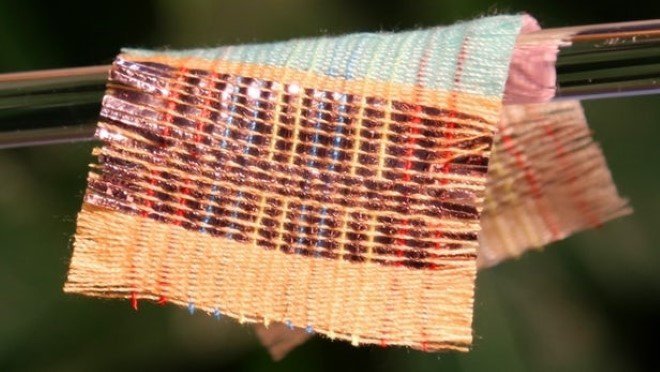Researchers Have Developed Fabric That Generates Power via Solar and Kinetic Energy

Imagine if you were sitting in the park, devouring the warmth of the sun, and taking the perfect picture of the exotic bird in front of you – suddenly your phone warns you of low battery – and before you can do anything about it, it dies.
Well, what if I told you that the clothes you are wearing might be able to charge your phone? You’d probably call me stupid.
However, thermoelectric and piezoelectric solutions have made it possible. The team at Georgia Institute of Technology has invented a fabric that not only harnesses solar energy but also kinetic energy simultaneously to basically turn your clothes (or any other fabric) into a mini-power bank!
So, how does it work? Well the triboelectric effect created through movement generates power. The fiber-based triboelectric nano-generators in collaboration with wire-shaped solar cells, composed of polymer fibers, are woven along with wool to create the fabric. Zhong Lin Wang, the study’s author, said, “This hybrid power textile presents a novel solution to charging devices in the field from something as simple as the wind blowing on a sunny day.”
Image: Credit: Georgia Institute of Technology
During the experiments, the team let a small flag out of the car window on a cloudy day. The piece was 4 x 5 cm in size and the material charged a commercial 2 millifarad capacitor to 2 volts in one minute. This is sufficient to run small electronic devices! The material is not only flexible but is also lightweight and breathable, hence making it suitable for curtains, tents, clothing etc. Wang further said, “The backbone of the textile is made of commonly-used polymer materials that are inexpensive to make and environmentally friendly. The electrodes are also made through a low-cost process, which makes it possible to use large-scale manufacturing.”
The team wishes to further improve the durability of the fabric and ensure that the electronic components do not come in contact with moisture. Let’s hope we get to see this real soon!
References: IEEE Spectrum: Technology, Engineering, and Science News, Georgia Tech, Futurism
